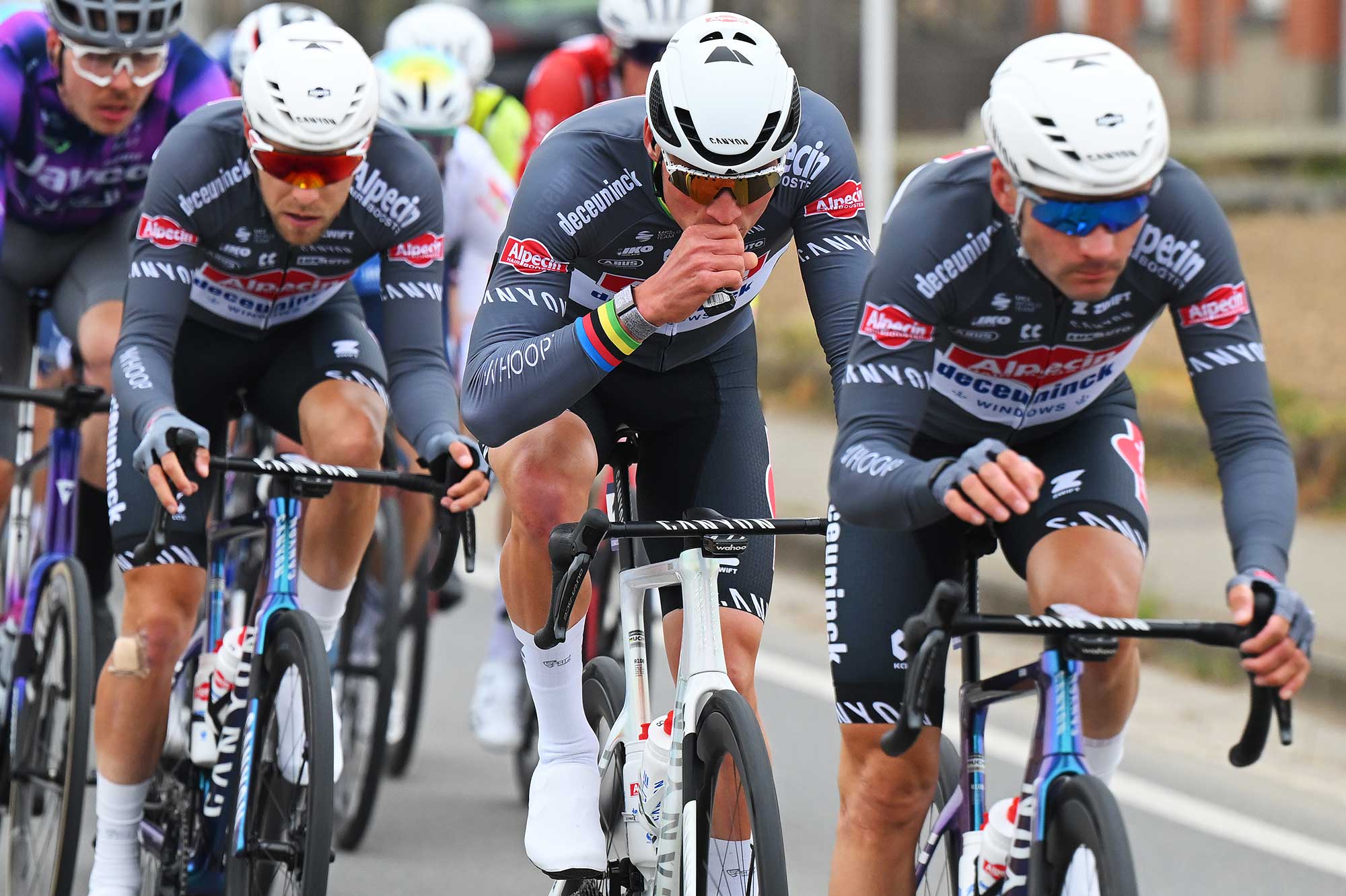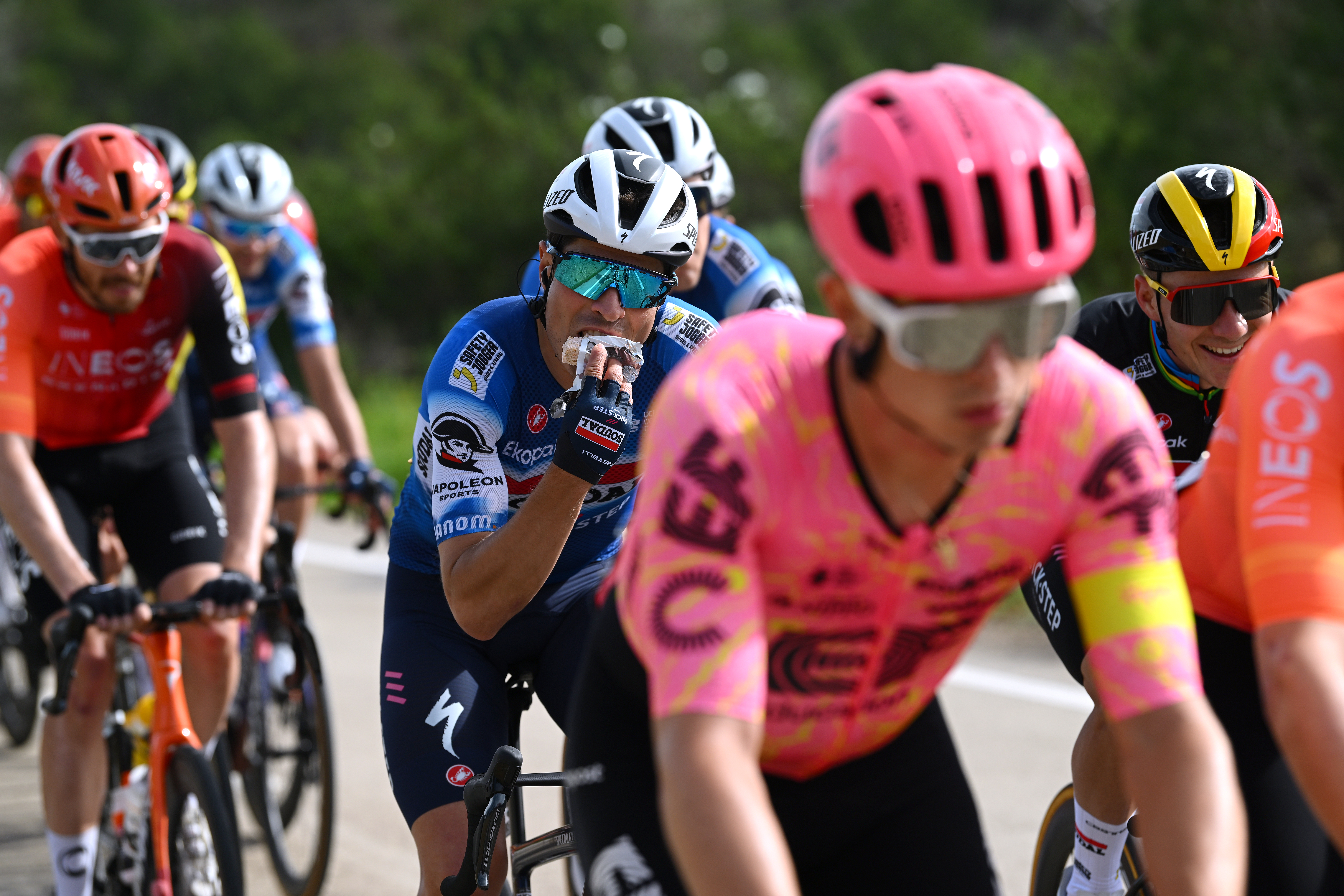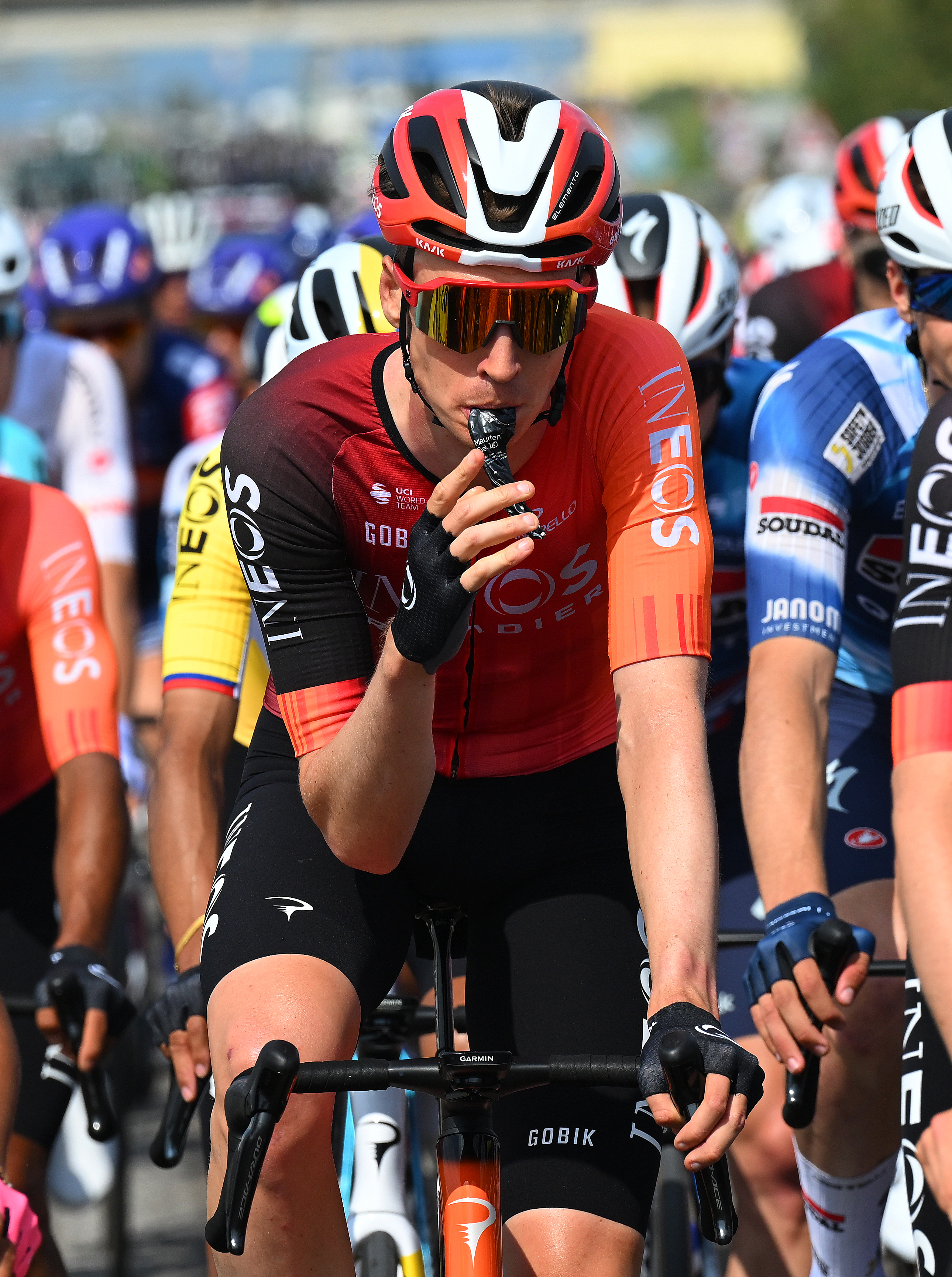New test used by WorldTour pros finally sheds light on the individuality of carbohydrate intake, and we've put it to the test
Evidence that 120g per hour might not be the right fuelling strategy for everyone

The science of carbohydrate intake has been a fascinating and fast-paced topic over recent years, and it's showing no signs of slowing down. A new test, developed by WorldTour nutritionists and seen in action by Cyclingnews, looks set to overhaul our understanding of how to fuel athletic performance.
It allows individuals to quantify their own rate of 'exogenous carbohydrate oxidation', or more simply, the amount of carbohydrates consumed during exercise that the body sends to the working muscles, and it is set to be made available to the general public.
The test comes about in response to fast-rising carbohydrate intake rates during exercise, and the need to understand where the limit lies. Carbohydrates are essential for performance, and consuming more is intrinsically tied to improved performance, but there's a tipping point. Consume so many that your body can't oxidise them, and you risk symptoms of GI distress such as stomach pain and diarrhoea.
The background
In recent years, pro cyclists have been pushing their carb intake higher and higher, far above the ceiling that the literature suggests our bodies can handle.
In the late '90s, research said our bodies could transport 60 grams of carbohydrates per hour, as this was the maximum amount of glucose the relevant transporter, known as SGLT1, could take out of our small intestine before it became saturated.
A paper by well known nutritionist, Dr Asker Jeukendrup in 2000 floated the idea that multiple transportable carbohydrates might increase this, and scientists later realised that our body could concurrently transport fructose via a different transporter, known as GLUT5, at a rate of around 30 grams per hour, and for a while this total of 90 grams per hour, using the 2:1 ratio of glucose and fructose, was the accepted 'ceiling' of what to eat when exercising.
More recently again, scientists – again, with Jeukendrup at the fore – trialled higher doses of fructose, and a new ratio of 1:0.8 was touted as optimal, equating to a total intake of 108 grams per hour, still with 60g from glucose, although this was loosely applied, and many just moved to around 110-120g per hour.
The latest race content, interviews, features, reviews and expert buying guides, direct to your inbox!
Then the notion of 'training your gut' became known, and nowadays the majority of the WorldTour peloton is taking in 120 grams per hour, and it's not uncommon to hear of stories of athletes taking on 50% more again.
Former Ineos Grenadiers rider and Ironman athlete, Cameron Wurf, recently confirmed to Cyclingnews that he took on over 200g per hour during the bike leg of a recent triathlon. And the biggest single-day intake I've seen to date was 2025 Unbound Gravel winner, Cameron Jones, who took on board 190 grams per hour for over nine hours straight.

The test
The test is non-invasive, and after a 48-hour period of slight dietary restriction, simply involves cycling on a smart trainer at a low zone two power for 90 minutes, while consuming a specially concocted formula of carbohydrates at 15-minute intervals.
These carbs look just like your typical drink mix sachet, but they're formulated using something called a carbon-13 isotope.
Almost 99% of all carbon on Earth is carbon-12, made up of six protons and six neutrons, whereas carbon-13 makes up just over 1% of carbon, and is named as such because it has six protons and seven neutrons.
Once these carbohydrates in the drink mix have been consumed, oxidised and utilised, the carbon-13 isotope is detectable in the carbon dioxide in your breath, which allows the testers to see what portion of the drink mix contributed to the effort.
At the end of the 90 minutes, with all the carbon-13 concoction consumed, samples of your breath are taken and shipped off to a lab to be analysed.
The test has long been used in a research setting in the lab, but Jamie Pugh, a Senior Lecturer in Sports Physiology and Metabolism at Liverpool John Moores University, has developed it into an at-home kit, allowing pro teams and amateur cyclists access to perform the test themselves.
His new company, ExoAnalytics Data, will soon make the testing kit available to the public, but at the time of writing has already sold 24 testing kits to one pro team - who must remain unnamed - and is in "final discussions" with a couple of others.
Pugh, alongside Dr Sam Impey, the former Team GB and Jayco Alula nutritionist who helps out alongside his full-time role at cycling nutrition app Hexis, has also been to Andorra, testing two athletes from the unnamed team in person, resulting in some research-defyingly high oxidation rates.
These results, which were confirmed to Cyclingnews by Impey, show WorldTour-level cyclists successfully oxidising more than 180 grams per hour.
For comparison, having been offered the chance to undergo the test myself, my result was 89g per hour, while Impey himself had a result of 69g per hour. Prior to the test, we had both been able to consume 120g per hour without discomfort.
Why is this key?
This test and the remarkable results it has already found could change how pro and amateur athletes approach fuelling athletic performance.
From a research level it has proven that oxidising 180g per hour is possible, but as yet we don't know if that's a genetic fluke, a result of long-term adaptation, or something else entirely. If this test gets taken up by pro and amateur cyclists over the coming years, then the data pool for individualised oxidation rates will grow to the point where trends may become noticeable.
Secondly, individuals could also be tested multiple times over the course of a season, perhaps coinciding with a gut training protocol, to see whether the oxidation rate is trainable.
"What we've always said is, if you feed more, does that reduce the GI symptoms?" Impey explained. "That's kind of been our barometer of being better at absorbing and oxidising it. [However,] what I think will be really interesting is if actually, we feed more and it only moves [the test result] a little bit, we realise that what we're actually training is our body's ability to tolerate discomfort in the gut."
Thirdly, at both an amateur and professional level, even though the test won't be cheap – I'm told somewhere in the region of £400 per test – this could enable a significant shift in optimising an individual's fuelling plan for a race.
Take Impey's result as an example. He was comfortable consuming 120g per hour, but was only actually oxidising 69g of that. This meant a 51-gram surplus each hour, which wasn't actively contributing to the task at hand.
First and foremost, that's both a waste of money and a lot of extra energy gels or bars to carry on long races.
But when you also consider it in the wider picture of day-to-day training, it's a calorie intake that could be cut down or at least improved from a nourishment standpoint.
For an athlete fuelling their training but trying to nourish and recover appropriately while maintaining a caloric balance, such a surplus of pure sugar in each training session is unnecessary.
And from an amateur's standpoint, perhaps a calorie intake that could simply be cut from the diet altogether. Or, as Impey succinctly puts it: "those are the calories I can't afford to have."

Where do they go?
According to Impey, "there's no easy answer."
"There are a couple of things that can happen to it. It could just not be absorbed, staying in your gut, and that's generally where people would find stomach issues or GI discomfort.
"It could get absorbed into your body and stored as glycogen. Or, while unlikely, it could potentially be stored as fat, or it can either just sit in different pools of the body for a little while, so it might be taken up into your liver and go through some other processes."
Interestingly, Impey caveats all this by adding that we're not 100% efficient, more like 80%, and so despite knowing he can only oxidise 69g per hour, his personal intake will now sit at around 85g, while my recommended intake is 110g, despite only oxidising 89.
This leads me on to the first of many questions that remain unanswered.

The future
We've already touched on training your gut, and the question of whether we're simply just training our gut's ability to tolerate discomfort, but coincidentally, my result is pretty much exactly what I've spent the past 12 months training at. I fuel at around 110g per hour, and with the 80% efficiency taken into account, I couldn't have oxidised any more.
It could be a pure fluke, or it could be indicative of my body having adapted to the fuel it was receiving; it's too soon to say for sure. Perhaps I ought to spend the next 12 months fuelling at 180g per hour, and test again to see what happens.
"The magnitude of change we honestly don't know yet," Impey said when asked how trainable it might be. "You're operating at the edge of our research there, so there's no definitive number on how that will play out just yet. We're hoping we have the first sets of data that look at, if you do a strategic period of high carb fueling, or use of certain probiotics, or changing the way that you fuel on bike, etc, how does that actually influence your body's ability to burn exogenous sources."
Another question includes whether the optimal glucose-fructose ratio remains at a fixed level, or whether this too is individual. With access to regular tests and the commitment to trial different mixes, the brand and its WorldTour team partnership(s) could be the key to unlocking this.
Other questions include whether there's a genetic difference between the oxidation capacity of pro athletes versus amateurs, and whether it's somehow tied to other 'good genes' that pro athletes are fortunate enough to possess.
One question that does have an answer, though, is whether the oxidation rate is linked to athlete size. While protein intake is often quoted in grams per kilo of bodyweight, carbohydrate recommendations were largely set as a fixed limit for all. But a 2025 paper by Dr Javier Gonzalez at Bath University found "large positive correlations" between body weight and oxidation rates.

Josh is Associate Editor of Cyclingnews – leading our content on the best bikes, kit and the latest breaking tech stories from the pro peloton. He has been with us since the summer of 2019 and throughout that time he's covered everything from buyer's guides and deals to the latest tech news and reviews.
On the bike, Josh has been riding and racing for over 15 years. He started out racing cross country in his teens back when 26-inch wheels and triple chainsets were still mainstream, but he found favour in road racing in his early 20s, racing at a local and national level for Somerset-based Team Tor 2000. These days he rides indoors for convenience and fitness, and outdoors for fun on road, gravel, 'cross and cross-country bikes, the latter usually with his two dogs in tow.
You must confirm your public display name before commenting
Please logout and then login again, you will then be prompted to enter your display name.
